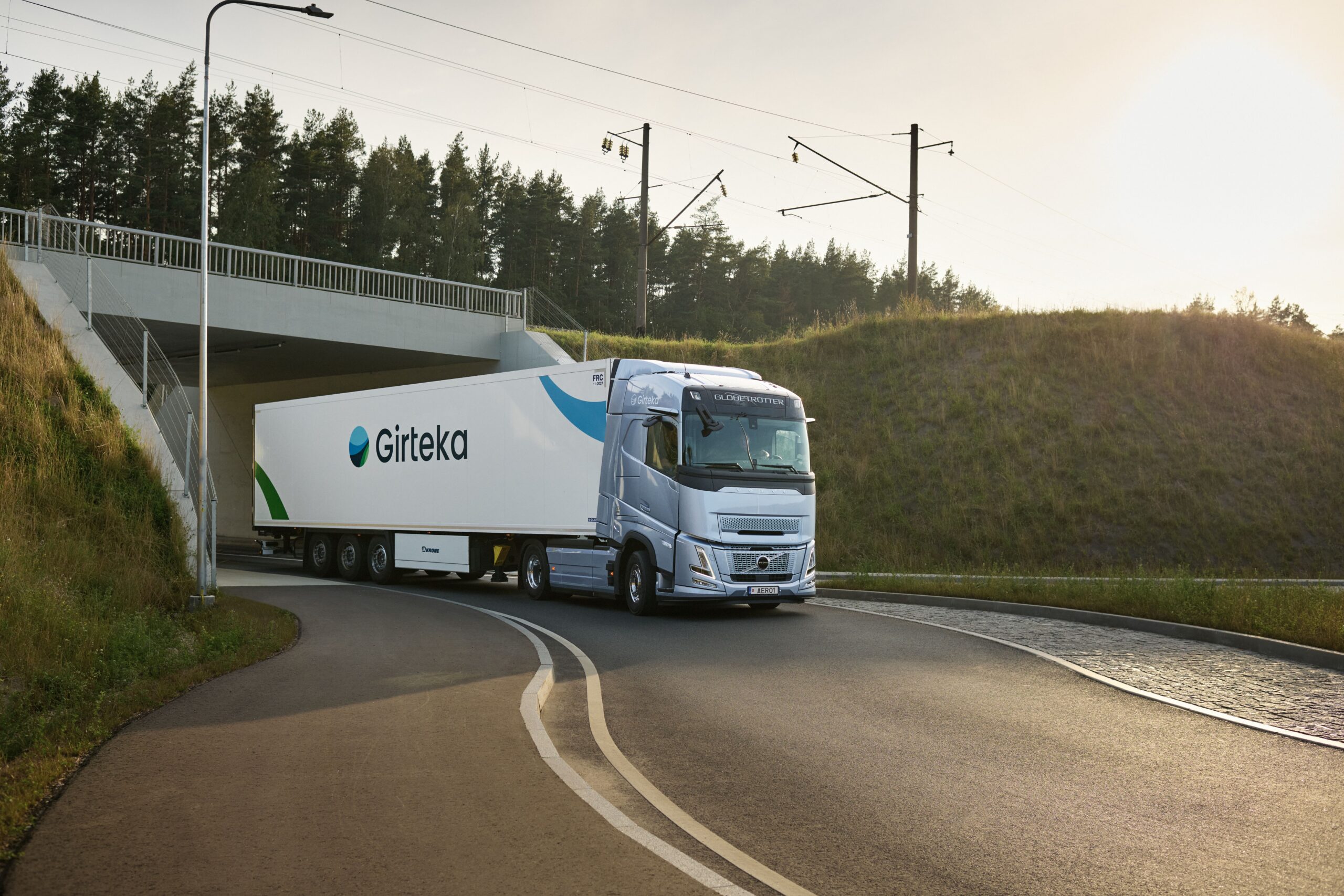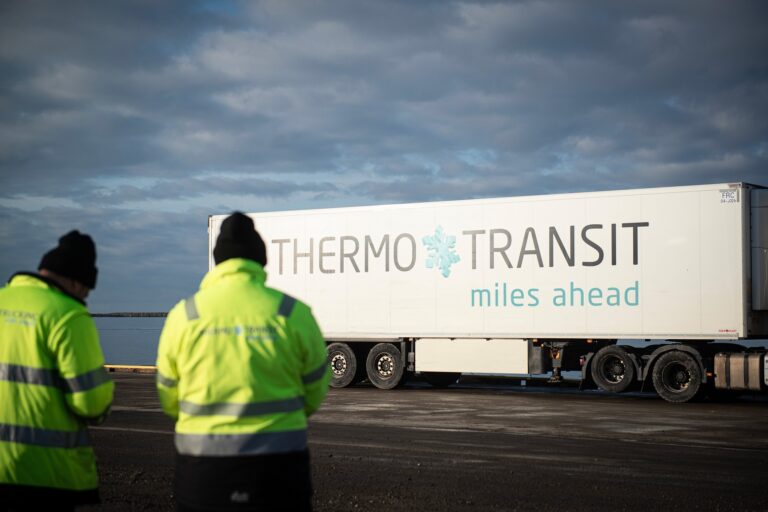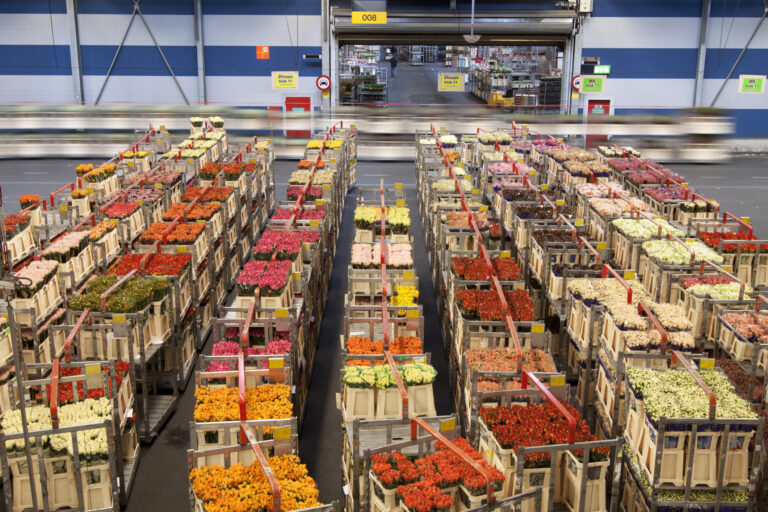Share it:
With a market share of 37,6% recorded in 2024 [1], the European pharmaceuticals sector is a solid building block of the regional economy. As research into diseases and alternative treatments continues to progress, this sector is also growing, extending from well-established everyday drugs like aspirin and insulin to advanced biopharmaceuticals and biotechnological materials.
Translating such diversity into the specifics of modern supply chains is a significant challenge on the logistics front. In the European Union, about 80% of pharma products now require temperature-controlled transportation [2] – a setup that creates high demand for cold chain logistics solutions. Vaccines, insulin, and other temperature-sensitive medications are highly vulnerable to fluctuations in temperature, and even slight variations can degrade their quality and efficacy, making them ineffective or even harmful to patients. Additional pressure also comes from EU regulatory bodies. For years, pharmaceutical regulations in most countries required products to be kept within manufacturer-established guidelines only during storage. It all changed when the European Union issued guidelines on Good Distribution Practices (GDP) for medicinal products for human use, extending temperature requirements to transportation and expanding coverage to include over-the-counter drugs. [3].
Together, these factors place increasing demands on pharmaceutical logistics. Choosing a reliable, compliant, and technologically advanced carrier is no longer just a competitive edge — it’s a critical necessity for product safety and public health.
Market overview and industry drivers
In addition to its prominence, the European pharmaceutical market is also showing steady growth. According to Nova One Advisor, it was valued at USD 285.35 Billion in 2023, USD 301.61 Billion in 2024 and is expected to reach USD 496.74 Billion by 2033, which shows a compound annual growth rate of 5.7% during the forecast period (2024-2033) [4].
The COVID-19 pandemic marked a significant turn for this industry, spiking demand for drugs and vaccines. Another major factor in demand growth is the growing presence of various chronic ailments. According to the World Health Organization (WHO), chronic diseases are the leading cause of death globally, with ischemic heart disease alone taking 8.89 million deaths in 2019 alone [5].
Europe houses more than 510 pharmaceutical companies and over 670 biotech firms, which are addressing rising global demand by actively developing treatments, therapies, and innovations. For instance, Belgian pharmaceutical companies alone invest over EUR 1.5 billion in research and development every year [6]. Another relevant point to note is that much of modern research leans toward complex biological-based medicines, hormone treatments, vaccines, and intricate protein formulations – all of which require specialized transportation and warehousing solutions [7].
Trends and challenges in pharma logistics
Since the focus of the industry naturally lies on temperature-sensitive pharmaceuticals, there is a significant need to develop an advanced cold chain infrastructure [8]. The broad spectrum of pharmaceutical products also demands specialized technological solutions that can accommodate requirements ranging from standard 2-8°C refrigeration to ultra-low temperature storage at -70°C for sensitive biologics [9].
In response to this demand, the industry has witnessed substantial investments in temperature-controlled warehouses, specialized transportation fleets, and monitoring systems to ensure product integrity throughout the supply chain. Frankfurt Airport, for example, now houses the world’s largest temperature-controlled infrastructure, serving more than 180 destinations and handling approximately 120,000 tons of pharmaceuticals a year [10]. Another standout example of adaptation to rising pharmaceutical demand is the Port of Antwerp. In 2022, it became the first seaport in the world to receive an official GDP certificate [11]. With 63,000 m² of GDP-certified warehouse space supporting both 2–8°C and 15–20°C storage [12], it shines a clear green light for the strict requirements of the pharmaceutical industry.
Dictated by the sensitive nature of products and rising demand, the industry is also set on enhancing operational efficiency and supply chain visibility. Logistics providers, in particular, are embracing automation, AI, and IoT solutions to develop sophisticated temperature monitoring and control systems. Besides ensuring a stable environment throughout the different phases of transportation and warehousing, future-forward carriers are also incorporating other cutting-edge solutions into their service offerings. Those include loading docks, handling equipment, and warehousing facilities equipped with multiple temperature zones to accommodate different product requirements, and, of course specialized vehicles – trucks and trailers equipped to provide real-time visibility, AI risks analysis and other IoT solutions [13].
In the context of innovation across the EU, sustainability is emerging as an important area for future development. Regulatory momentum and environmental concerns are driving a broader shift toward low-emission solutions and greener supply chains. However, addressing these challenges effectively will require coordinated action across industries, not just from logistics providers. As the need to measure and reduce Scope 3 emissions grows — capturing indirect emissions throughout the supply chain — collaboration among suppliers, transport partners, and policymakers will be essential to create transparent, sustainable systems that meet both regulatory and societal expectations. [14].
Legacy vs. innovation: the pharma divide
Looking past the internal complexity of the pharmaceuticals industry, production is split into two main segments: chemical pharma and bio-pharma. Chemical pharma continues to dominate the European pharmaceutical logistics market – it held around 61% of market shares in 2024 [15]. The dominance of this segment is rooted in well-established manufacturing and export networks, particularly in Germany, France, and Switzerland. It is also fueled by significant investments in GDP-compliant storage and transport.
Meanwhile, bio-pharma is emerging as the fastest-growing segment with a projected growth rate of 4% between 2024 and 2029 [16]. The main driver behind this trend is the rising demand for biologics, vaccines, and personalized medicines, which is met through a growing spectrum of biological drugs, vaccines, and personalized medicines. Due to the complex, temperature-sensitive requirements that inevitably come with most products in this segment, bio-pharma is challenging cold chain logistics by prompting increased investment in advanced infrastructure across the region.
Geographical insights into pharma logistics in Europe
Conveniently positioned in the central part of the continent, Germany is a global leader in pharmaceutical production, accounting for 5.2% of worldwide pharmaceutical manufacturing [17]. This is due to multiple reasons, including major state funding of major investments made by pharma companies, stable regulatory environment, and an abundance of highly qualified specialists in biotechnology, pharmaceuticals, and chemistry [18]. Another strong advantage is Germany’s extensive transportation network.
Poland is another significant player, mostly due to strategic distribution advantages and low operational costs compared to Western European countries. This is proven by heavy investments in Poland’s logistics capabilities by such global e-commerce players as Amazon, DHL, and UPS [19]. All facilities combined, Poland offers over 30 million square meters of warehouse space, strongly contributing to the necessity of a dynamic and agile transportation network in Central Europe.
This need is often addressed via a strategic approach as companies aim to optimize their networks by establishing additional international hubs and service centers across Europe to enhance distribution efficiency. The industry has also witnessed a notable trend toward the consolidation of cold chain infrastructure, with several companies establishing European-wide networks of temperature-controlled facilities that also work to expand the pharmaceutical cold chain [20].
Regarding the dominant modes of transport, road freight has been the primary solution for a long time. Rail shipping, however, is on the rise with a projected growth rate of 5% during the forecast period of 2024-2029 [21]. The main drivers behind this trend are cost-effectiveness and lower emissions, which proactively address the growing preference for sustainable solutions. The railroad infrastructure is also improving rapidly – a progression primarily attributed to increasing investments in development and the implementation of new technologies to digitize rail freight operations. Compared to road transport, rail promises lower disruption rates and a better cost-to-distance ratio. Coupled with improved services – especially regarding bigger payload capacities and sophisticated temperature control system s – it is a promising alternative for the pharmaceuticals industry.
Delivering under pressure: the competitive pharma logistics landscape
As the pharmaceutical industry continues to drive demand for specialized cold chain solutions and operative efficiency, carriers are rising to this challenge in two key approaches. The first segment niches down, building processes and technological integrations specifically around the needs of this sector. The second group retains its versatility, simultaneously raising its appeal to the pharma industry by promising increased flexibility, scalable capacity, and the ability to integrate pharmaceutical logistics into broader multimodal networks. This dual-track approach is shaping a dynamic and competitive landscape where responsiveness, compliance, and innovation determine who stays ahead.
Zooming in on technology as a key differentiator, technological advancements have put a wide variety of future-forward tools at carriers’ disposal. Automation, artificial intelligence, and predictive optimization tools are already becoming an industry standard in streamlining operations and mitigating risks across the supply chain. Real-time temperature monitoring, smart packaging, and blockchain-based traceability systems are also finding their way into standardized solutions, ensuring compliance with strict pharmaceutical regulations while boosting transparency and reliability. This fast-moving trend clearly shows that tech-enabled logistics isn’t just a competitive edge anymore – it’s a necessity for securing long-term relevance and client trust .
One example of how logistics providers are adapting to the evolving needs of the pharmaceutical industry is the integration of cold-chain expertise with advanced digital tools. For instance, Girteka, a GDP-certified carrier with long-standing experience in temperature-sensitive transport, employs real-time shipment tracking and temperature monitoring to enhance transparency and reliability. The company has also begun incorporating more sustainable practices, such as using electric trucks, HVO 100 fuels, and intermodal rail options to reduce emissions [22]. As pharmaceutical products grow more complex and supply chain expectations increase, such targeted solutions demonstrate how logistics partners can support the industry’s shift toward greater efficiency, resilience, and sustainability.



